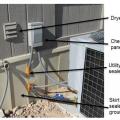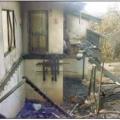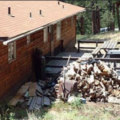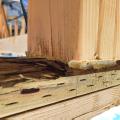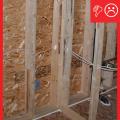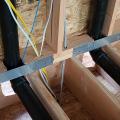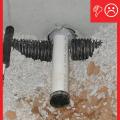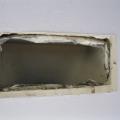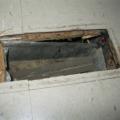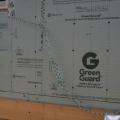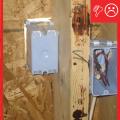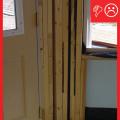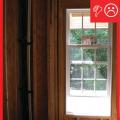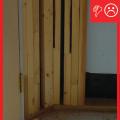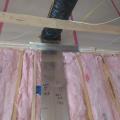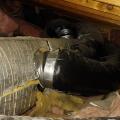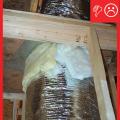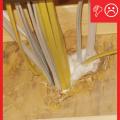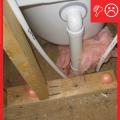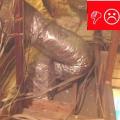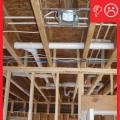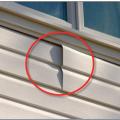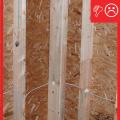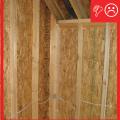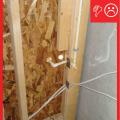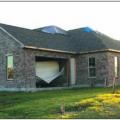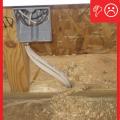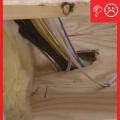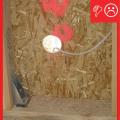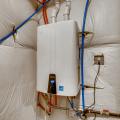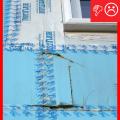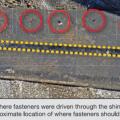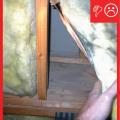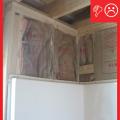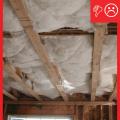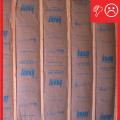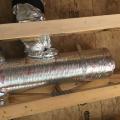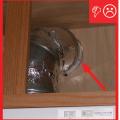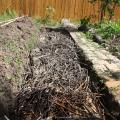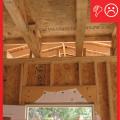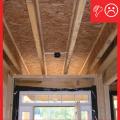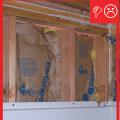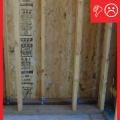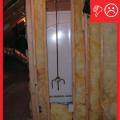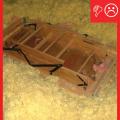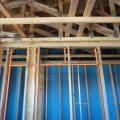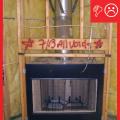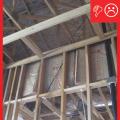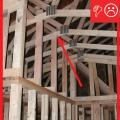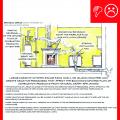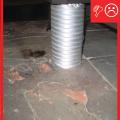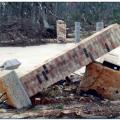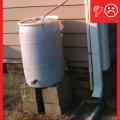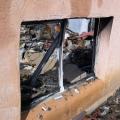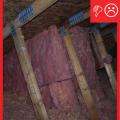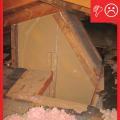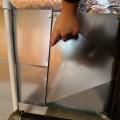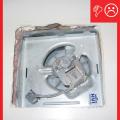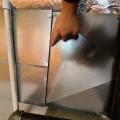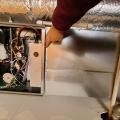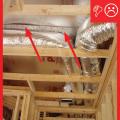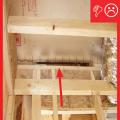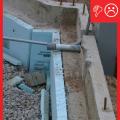Showing results 4701 - 4800 of 4973
Wrong – Check and seal all rodent entry points, electrical, plumbing, and vents; hardware cloth is better than foam, which rodents can chew through
Wrong – Combustible debris under this deck ignited and led to the destruction of the deck.
Wrong – Compression and misalignment because insulation is not split around plumbing
Wrong – Compression and misalignment because insulation is not split around wires
Wrong – Construction adhesive is not a substitute for a wood shim on a too-short stud; the glue has no compressive strength.
Wrong – Conventional T-post detail is extremely difficult to insulate and usually doesn't happen
Wrong – Conventional wood deck risks ignition from embers falling on the surface or from unmaintained vegetation burning below.
Wrong – Design walls so that windows are positioned to fit regularly spaced studs so less additional studs are needed.
Wrong – Don’t use nails to fasten poly vapor barrier around flex ducts; it will allow moist air to reach the ducts where it could condense and ruin the insulation.
Wrong – Drain pipe has been cut and foundation penetration has not been properly sealed
Wrong – Duct is pulling away from ceiling because it is not sealed to the ceiling
Wrong – Either this tape was not pressed down firmly or the surface was wet or dirty so the tape is not sticking properly even during construction.
Wrong – Exhaust fan ducts must be smooth metal ducts; flex duct is not permitted by the IRC.
Wrong – Fiber board duct is not sealed at seams; flex duct is sealed with duct tape not mastic tape or UL-181 metal tape.
Wrong – Fibrous insulation is not an air barrier and cannot be used for sealing holes.
Wrong – Fibrous insulation is not an air barrier and cannot be used for sealing holes.
Wrong – Fibrous insulation is not an air barrier and cannot be used to air-seal openings.
Wrong – Foam was sprayed at exterior sheathing and sill plate connection, leaving gaps beneath sill plate.
Wrong – For proper detailing of vinyl around windows and other obstacles, use utility trim, punch snaplocks into siding, and do not overlap directly beneath a window.
Wrong – Gable end vents can circumvent soffit-to-ridge airflow and allow in wind-driven rain and wildfire embers
Wrong – Garage door failure due to positive pressures from hurricane force winds.
Wrong – Holes have been cut larger than needed, making them difficult to air-seal.
Wrong – If a fireplace is desired, install a vented model not an unvented model.
Wrong – If a wall vapor retarder is needed, as in this cold-climate home, openings in the vapor retarder should be sealed with tape.
Wrong – If dimpled plastic is used it should be trimmed to drain down at the bottom rather than up where water can collect in it.
Wrong – If roof membrane is not fully adhered, it can flutter and fail due to negative pressure from wind above and positive pressure from air leakage through roof deck below
Wrong – If the insulated sheathing will serve as an air barrier and drainage plane, any cuts and seams must be taped or sealed.
Wrong – Insulation does not fill entire cavity nor is there an air barrier present between the double wall
Wrong – Insulation is in direct contact with this non-insulation contact (IC)-rated recessed light fixture
Wrong – Insulation should not be pinched where flex ducts connect to the trunk duct as compression of the insulation here can lead to cold spots and condensation on the duct surface.
Wrong – It is difficult to test the air flow in this fresh air intake duct due to poor access and inadequate length of straight duct to get an accurate in-line flow measurement.
Wrong – It is not good practice to route plumbing through sill plates or on an exterior wall.
Wrong – Known as a Hugel Swale, organic matter like sticks and leaves break down into compost and fill the swale full. This limits the swale’s ability to filter rainwater.
Wrong – Misalignment of the tie reduces the embedment and enables the brick veneer to be pulled away.
Wrong – No air barrier installed between the walls and a larger gap between the walls that needs sealing
Wrong – No blocking installed to prevent attic insulation from falling into stairs and opening
Wrong – No membrane or sealant is installed to air seal at the roof-truss assembly junction with the party walls
Wrong – No polyethylene sheeting vapor barrier is installed on the crawlspace floor
Wrong – Overly powerful kitchen exhaust fans can backdraft other combustion appliances in the home
Wrong – Piers set on individual footings with inadequate anchoring to the ground were twisted and toppled by a coastal storm surge, while those anchored in the concrete pad stayed upright.
Wrong – Polyethylene sheeting does not completely cover the aggregate and the footing
Wrong – Polyethylene sheeting does not extend beyond edge of aggregate to separate the footer from the stem wall which will be poured next
Wrong – Rain barrel installed without an overflow spout that terminates away from foundation
Wrong – Regular window glass is susceptible to breakage from the radiant heat of a wildfire; tempered and laminated glass are more resistant to breakage.
Wrong – Rips in foil air barrier behind shower were not taped; solid air barrier material is more durable.
Wrong – Roof underlayment is not fully adhered and roof deck seams are not sealed so roof is susceptible to high-wind events
Wrong – Roughly cut hole that is larger than the fan, making it difficult to seal
Wrong – Roughly cut hole that is larger than the fan, making it difficult to seal
Wrong – Seams in the furnace-to-AC connection at the air handler are not sealed.
